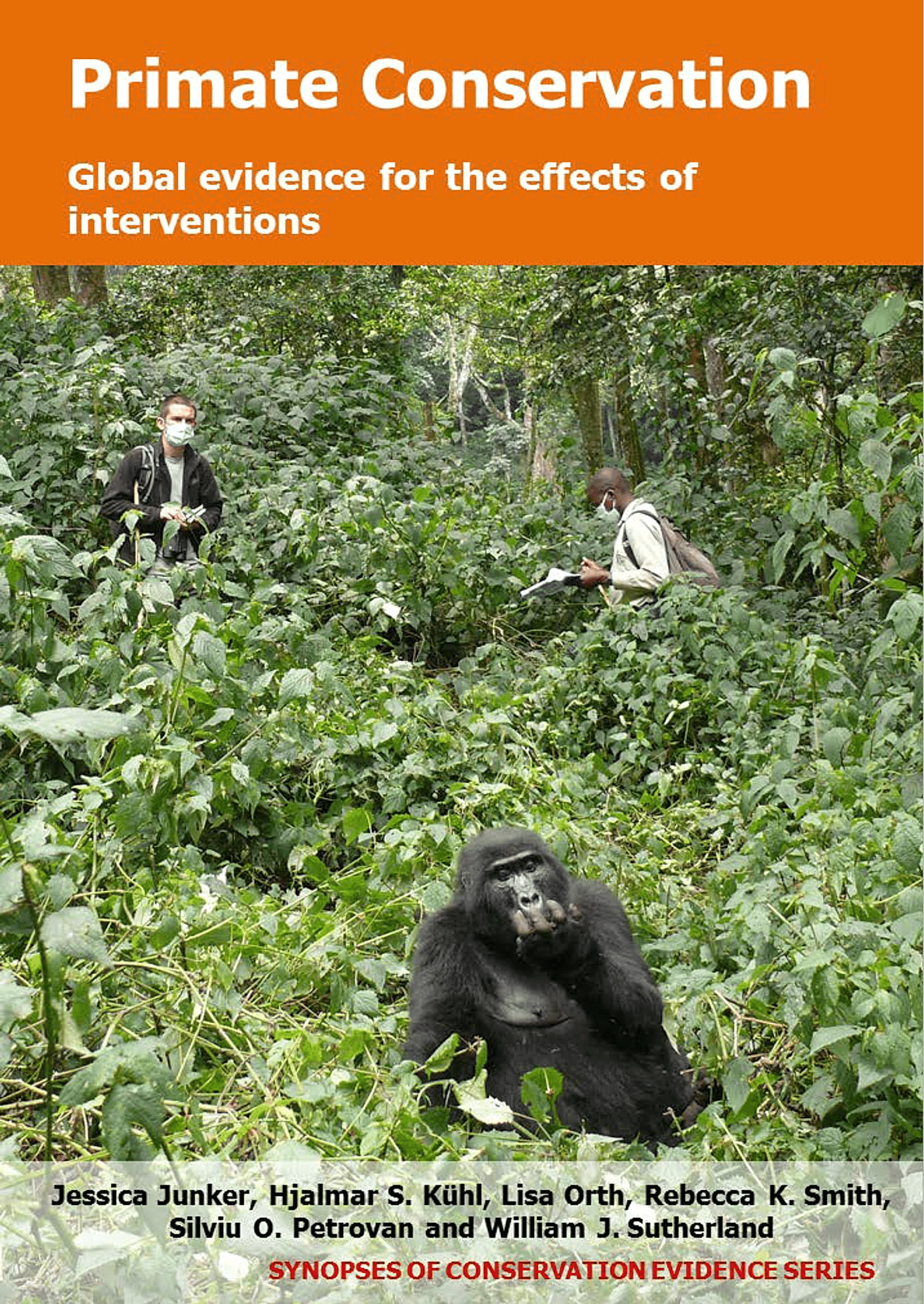Actions to conserve biodiversity
We have summarised evidence from the scientific literature about the effects of actions to conserve wildlife and ecosystems.
Review the evidence from the studies
Not sure what Actions are? Read a brief description.
162 Actions found
Refine
Hide
162 Actions found
Download Actions
Order results by:
| Action | Effectiveness | Studies | Category | |
|---|---|---|---|---|
Avoid contact between wild primates and human-raised primates Action Link | No evidence found (no assessment) | 0 | ||
Implement a health programme for local communities Action Link | No evidence found (no assessment) | 0 | ||
Reduce garbage/solid waste to avoid primate injuries Action Link | No evidence found (no assessment) | 0 | ||
Reduce noise pollution by restricting development activities to certain times of the day/night Action Link | No evidence found (no assessment) | 0 | ||
Install billboards to raise primate conservation awareness Action Link | No evidence found (no assessment) | 0 | ||
Remove human food waste that may potentially serve as food sources for primates to avoid disease transmission and conflict with humans Action Link | No evidence found (no assessment) | 0 | ||
Integrate religion/local taboos into conservation education Action Link | No evidence found (no assessment) | 0 | ||
Create buffer zones around protected primate habitat Action Link | No evidence found (no assessment) | 0 | ||
Demarcate and enforce boundaries of protected areas Action Link | No evidence found (no assessment) | 0 | ||
Restore habitat corridors Action Link | No evidence found (no assessment) | 0 | ||
Plant indigenous fast-growing trees (will not necessarily resemble original community) in clear-cut areas Action Link | No evidence found (no assessment) | 0 | ||
Use weeding to promote regeneration of indigenous tree communities Action Link | No evidence found (no assessment) | 0 |
Download Actions

Primate Conservation - Published 2017
Primate Synopsis
Watch this search
If you are familiar with RSS feeds, please click the button below to retrieve the feed URL:
RSS feed for this searchIf you are unfamiliar with RSS feeds, we would suggest reading this BBC article.
Unfortunately, due to the number of feeds we have available, we cannot provide e-mail updates. However, you could use tools such as Feed My Inbox to do this for you.
What are 'Individual studies' and 'Actions'?
Individual studies
An individual study is a summary of a specific scientific study, usually taken from a scientific journal, but also from other resources such as reports. It tells you the background context, the action(s) taken and their consequences.
If you want more detail please look at the original reference.
Actions
Each action page focuses on a particular action you could take to benefit wildlife or ecosystems.
It contains brief (150-200 word) descriptions of relevant studies (context, action(s) taken and their consequences) and one or more key messages.
Key messages show the extent and main conclusions of the available evidence. Using links within key messages, you can look at the paragraphs describing each study to get more detail. Each paragraph allows you to assess the quality of the evidence and how relevant it is to your situation.
Where we found no evidence, we have been unable to assess whether or not an intervention is effective or has any harmful impacts.




















